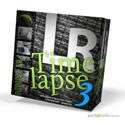There is often confusion about model release forms, and new models are sometimes concerned about signing them. This post attempts to provide a brief outline of what model releases are, who they protect, and when they should be used.
What is a Model release ?
 A model release is a legal document that gives a photographer permission to use a model’s likeness to create and sell content covered by the release. It will often also state that the model will not be further compensated beyond what is agreed on at the time of the shoot.
A model release is a legal document that gives a photographer permission to use a model’s likeness to create and sell content covered by the release. It will often also state that the model will not be further compensated beyond what is agreed on at the time of the shoot.
Who does the Model release Protect?
Model releases help protect the photographer, the model, the agency (if any) and anyone else who may buy or uses the image in the future. With the proper paperwork, everyone knows what to expect from each other, and should any disagreements arise later on, this document can be the deciding factor.
When To Use a Model Release?
The short answer is, that a photographer should really get a signed model release any time they take a photo of a person. Even under circumstances (see below) when it may NOT seem necessary, sometimes situations change.
When is a Model Release Not required ?
- If you are only using the images for personal or editorial use then you don’t need to get a release. However if at some stage you would like to license your work for a commercial purposes, then the publisher will require a release form.
- If you can’t identify the model or property then you don’t need a release form. However, identifying a person in an image does not just come down to their face being visible, there are plenty of other factors that can allow a person to be identified (e.g. scars, birth marks, tattoos, silhouettes, etc…).
- If you take photos in a public place, you will probably not need a release – in most countries the law state that you give up your right to privacy in public places, however this does not automatically mean that you can take photos of people in public and sell the images.
When is a Model Release Necessary ?
- If a person is in any way identifiable in your image, you’ll need to get a signed model release. Ask yourself: Could someone, other than the model himself/herself, recognize the person in this photo? – If you’re leaning towards a yes, regardless of how much or little of that person is shown, you should get a model release.
- Even if a model is not identifiable at all but is nude or even partially nude then you should get a release.
- If you plan to submit photos to a stock library, every image with an identifiable person requires a model release. This includes; the deceased, self-portraits (i.e. yourself), children (minors), movie stars, political leaders, anyone…
Can I use digital model releases?
A digital model release is usually acceptable and most of the main stock photo services accept digital model releases from the following approved iPhone, iPad, and Android applications:
If there is ANY doubt, it is usually better to get a release than not….It’s always better to do it on the shoot then wishing you did after the fact









